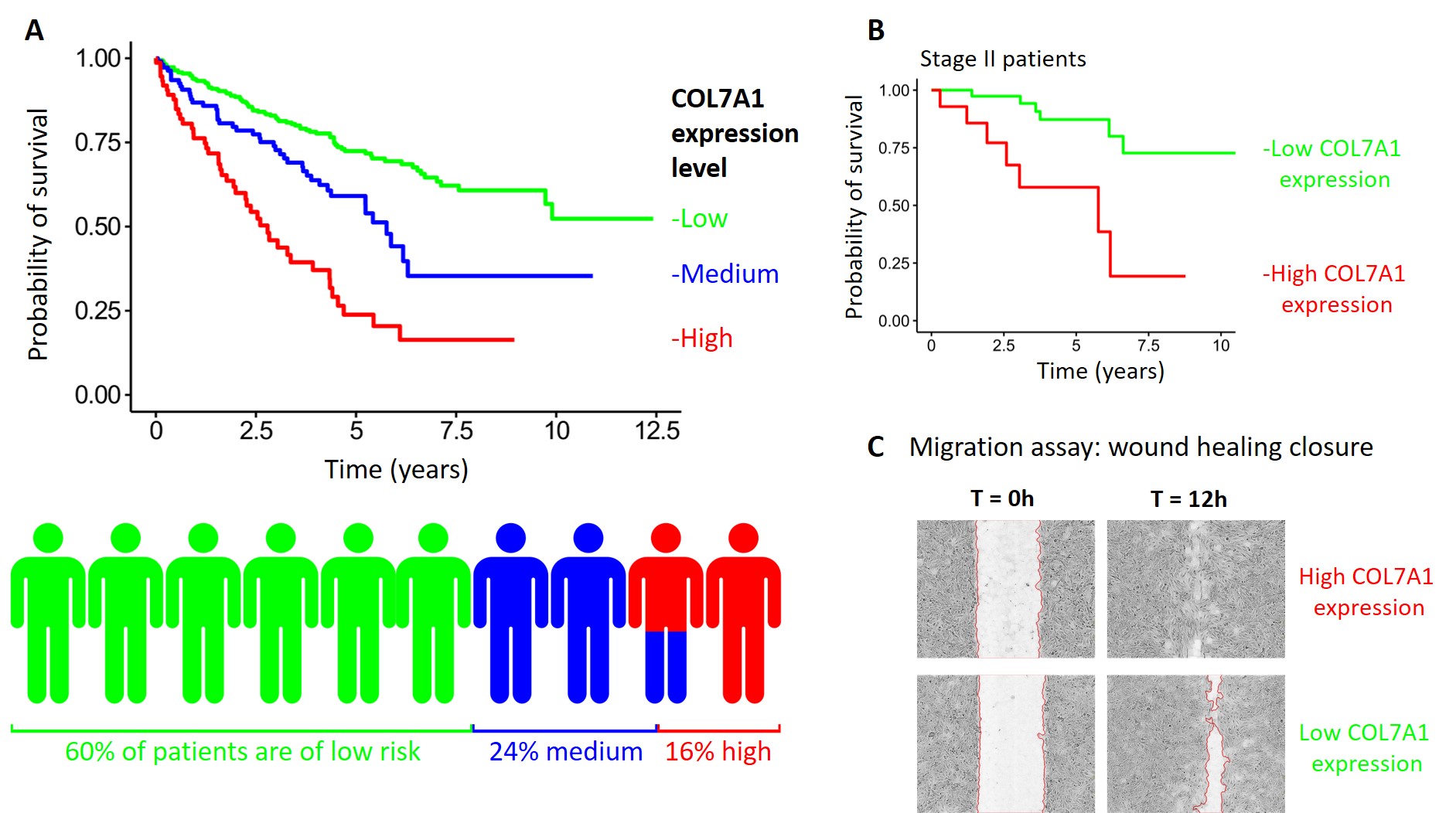Sometimes diagnosed at an advanced stage, cancer can progress, spread to distant organs (metastasis) and/or reappear after treatment. Assessing patients' chances of survival would therefore help clinicians to improve disease management. Researchers at Biosante investigated the prognostic potential of each gene to identify new biomarkers for predicting patient survival in clear cell renal cell carcinoma, the seventh most common type of cancer in the Western world. Their research revealed that increased expression of the
COL7A1 gene, encoding a specific form of collagen, correlates with the advancement of this cancer and therefore with the risk of death (Figure A). Moreover, this high expression also makes it possible to identifiy patients most at risk among patients of the same stage, such as stage II (generally with a good prognosis) (Figure B). This new method of survival assessment is complementary to, and more precise than some of the methods (such as the stage) used today in the clinic. Since the COL7A1 biomarker is robust, it can be applied to patients of different genetic/ethnic origins or who have undergone different therapies.
Preliminary experiments on cultured kidney cancer cells have led researchers to hypothesize that this correlation with risk is causal:
COL7A1 may play a role in cancer cell migration, a key step in the development of metastasis in patients (Figure C). Furthermore, the presence of
COL7A1 is also correlated with high expression of genes involved in important molecular mechanisms of carcinogenesis: cell division, inflammatory response and epithelial-mesenchymal transition.
In conclusion, researchers at Biosante have developed a method for identifying kidney cancer patients most at risk, with the aim of improving their management. To further improve predictions, researchers are currently using artificial intelligence (AI) methods, using the expression of several genes. In the longer term, if
COL7A1's role in cancer cell migration/invasion is confirmed, it could be a therapeutic target to reduce the onset of metastasis.

Figure A. Probability of survival for kidney cancer patients as a function of time after surgery. In green, the 60% of patients with low
COL7A1 expression in the tumor - these patients have the best chance of survival (over 10 years for more than half of the patients). In blue, 24% of patients with medium
COL7A1 expression have an intermediate chance of survival (over 5 years for half of the patients). In red, 16% of patients with high
COL7A1 expression have a reduced chance of survival (less than 2.5 years for half of the patients).
Figure B. Identical to Figure A, but restricted to stage II patients (early stage). These patients are not considered "at risk" using current methods. Measurement of
COL7A1 expression identifies the 15 patients (out of 57) most at risk.
Figure C. In vitro cell migration experiment. After removing the cells from the center of the petri dish (clear vertical zone or wound, i.e. devoid of cells, at time T = 0h), cells expressing a high level of
COL7A1 (top) migrate faster: in 12h, they have "filled in" the wound, which is not the case for cells with low
COL7A1 expression.